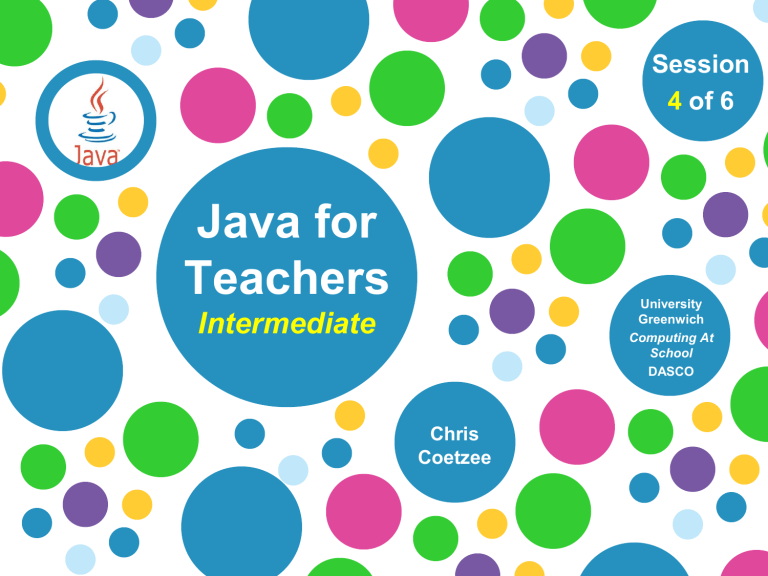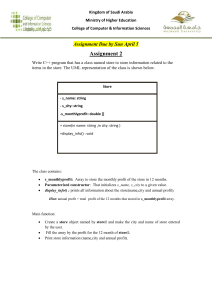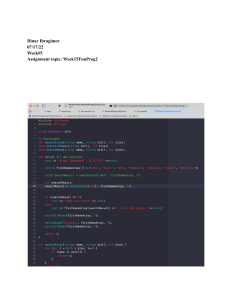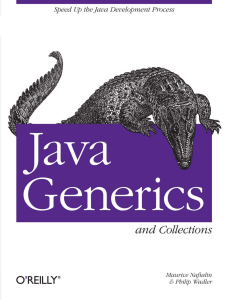
Session 4 of 6 Java for Teachers University Greenwich Computing At School DASCO Intermediate Chris Coetzee Levels of Java coding • • • • • • • • • • 1: Syntax, laws, variables, output 2: Input, calculations, String manipulation 3: Selection (IF-ELSE) 4: Iteration/Loops (FOR/WHILE) 5: Complex algorithms 6: Arrays 7: File management 8: Methods 9: Objects and classes 10: Graphical user interface elements Files There are two types of files in computing: – Text files (that contain ASCII/Unicode characters) – e.g. TXT, CSV – Random Access Files (that contain binary objects) – e.g. JPG, MP3 Setting up the file connection Steps to remember: 1. Import: java.io.* 2. Throw away any IOExceptions (throws IOException) that could potentially occur in the main method Connecting to the file Steps to remember: 1. First add a File Reader 2. Then add that File Reader to a Buffered Reader Where do I store the text file? Store the file in the MAIN project folder (not in BIN or in SRC) How do I read from the file? ALL INPUT IS ALWAYS STRING! Useful strategy to know Sometimes you might want to read in data like this: 23, 45, 56, 93, 23, 35 Suggested strategy: 1. Read in the line in to a String 2. Split the String into an array 3. Convert the values into ints In Java that would be: Which reads as… 1. Read the first line from the file in to a String variable called line. 2. Split the line variable into an String array called tempstringarray 3. Create an integer array called intarr of the same size as tempstringarray 4. Loop through for all the values in tempstringarray 5. Convert each value from a String to an int and store it in the new integer array at the same index point. Writing to a file No buffer is used this time. You write directly to the file. In the end, always .close() Example of adding numbers in a file




